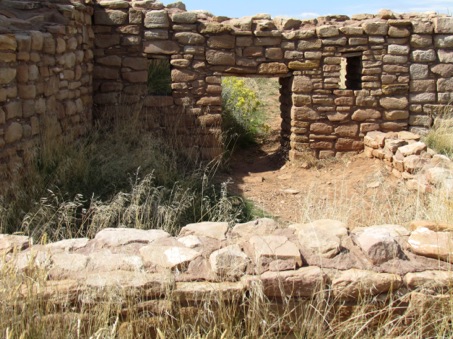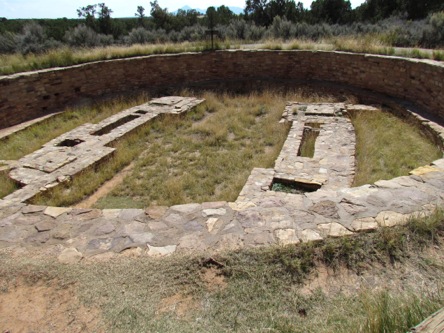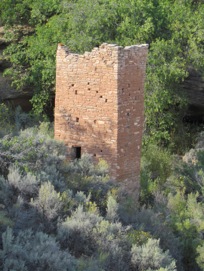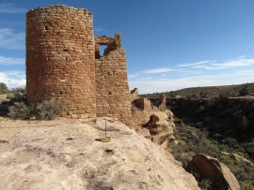When they were going to flood the Dolores River canyon near Dolores, CO to provide more water for irrigation, knowing how many archeological sites were in the ‘future’ reservoir, they notified archeologists and gave them between 1978 to 1985 to dig. They knew that the valley was densely populated between 650 - 900 AD and suspected many sites. In the time the archeologists found 1600 sites and partially excavated 100 of them. They found over 1.5 million artifacts which they catalogued for future study in the Anasazi Hereitage Center which is both a research facility and a museum. This is where we visited today.
Have you ever heard of archeomagnetic dating? Archeologists use ashes in a fire pit to determine how old a fire was. It seems that the magnetic north pole wanders erratically from year to year and geologists have mapped this throughout the centuries. When a fire heats the soil beneath it, the iron particles in the soil align themselves towards wherever magnetic north was at that particular time. Thus, archologists track the alignment of the iron particles, match it to their records and determine when the fire was burning. Pretty clever technique.
And everyone knows what ‘dendrochronology’ is, right? it’s tree ring dating. I just didn’t know it had a name.
Very good museum both on archeological techniques and the Anasazi and we learned a lot but also got the names of other sites we’d like to visit sometime. They actually have an Anasazi site right on the museum grounds.
Afterwards we visited Lowry Pueblo constructed in 1060 AD. In the end, before the inhabitants left, there were 40 rooms and a large kiva, a round roofed ceremonial structure 47 ‘in diameter. Much of it is roped off but they do let you walk through several of the rooms. It is fascinating looking at the building techniques. Their walls were thick (the one below is 4 stones wide). Their rock placement so exact and their mortar so strong that many structures still stand.


The Ancestral Puebloan women were about 5’ tall while the men were 5’3. About 1/2 of all children died before the age of 6 so that the average age of death was 30. The ground was arid, the winters were cold, their diet consisted of corn, squash beans and what small game they could trap and life was hard.
Doorways and windows were small to keep our the cold but very square. Their homes were very sturdy but unfortunately they never learned dove-tailing in their corners. They just butted the stones together and sometimes cracks appeared between the walls.
The kiva, their ceremonial center, was 47’ in diameter and was covered. 1/2 of the kiva is underground, the rest rises above ground level and is accessed via a ladder through the roof. In forests hundreds of miles away, they had cut Douglas fir tree trunks with hand axes, let them dry to be lighter and carried them by hand back to their village. These were used to make the roof but here it is without the roof since logs don’t last as long as stone. Look at the fine construction and even smooth lines.

Our third visit was to Hovenweep National Monument. Here there are about 6 small villages spread out over 20 miles but the greatest concentration is along the rim of a small canyon. We walked the rim trail, which circles around the small canyon giving us great views of each of the buildings.


And, then we finally wended our way home, with a much greater appreciation for the building skills of the Ancient Puebloans. Was their life easy? Heavens, no. But, did they leave some amazing structures? Absolutely. Given their conditions, their construction techniques were first rate.

No comments:
Post a Comment